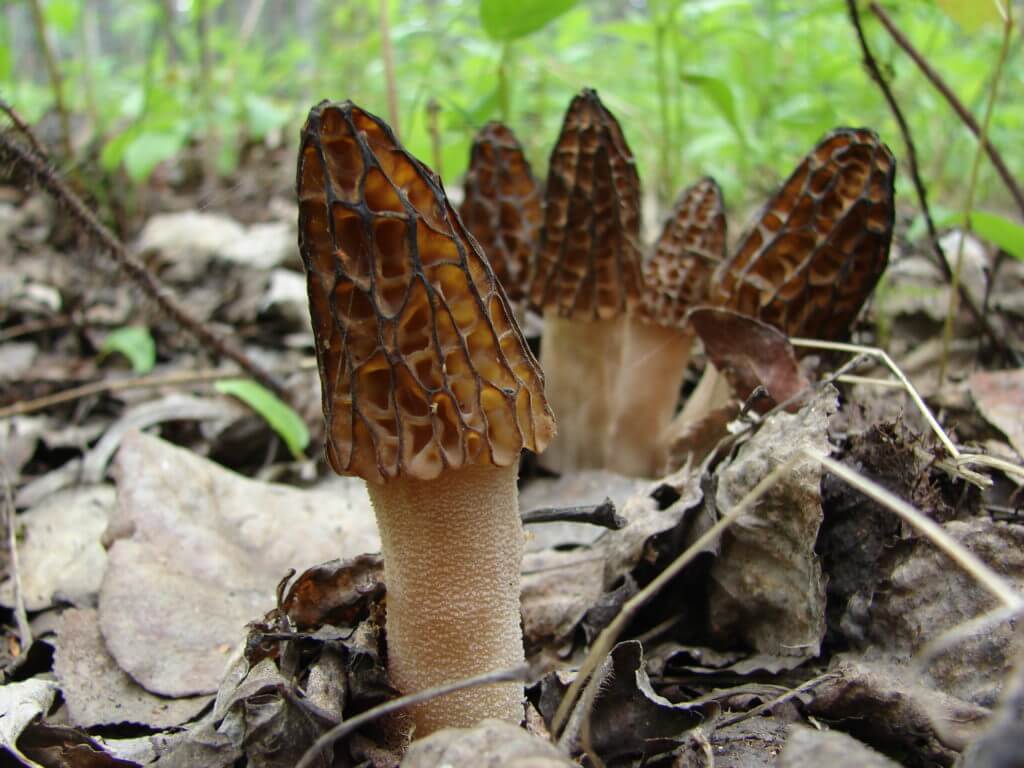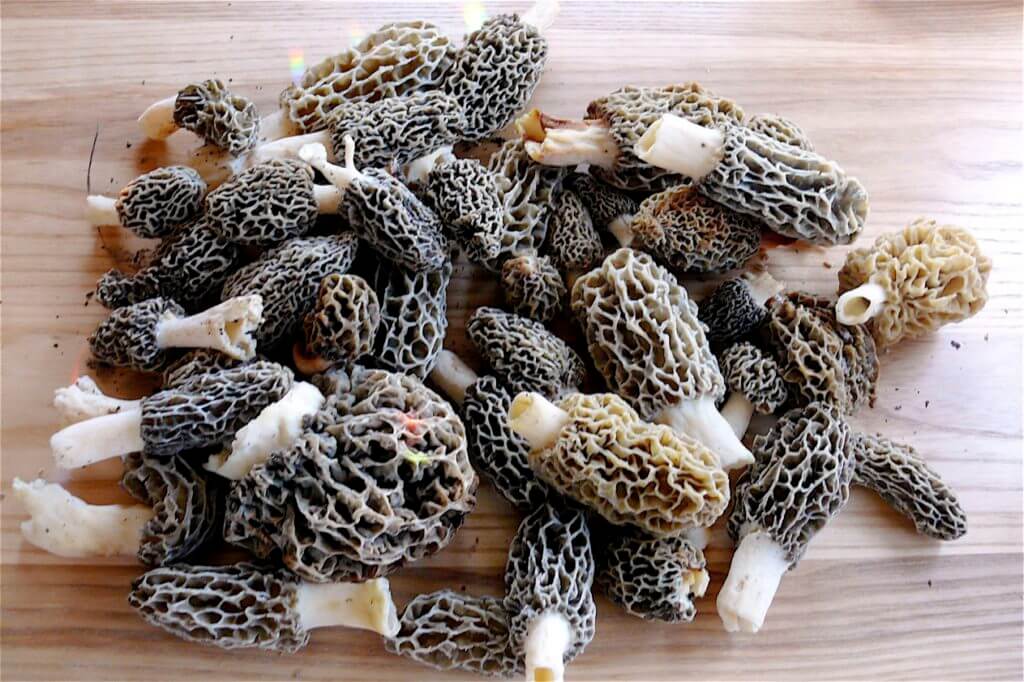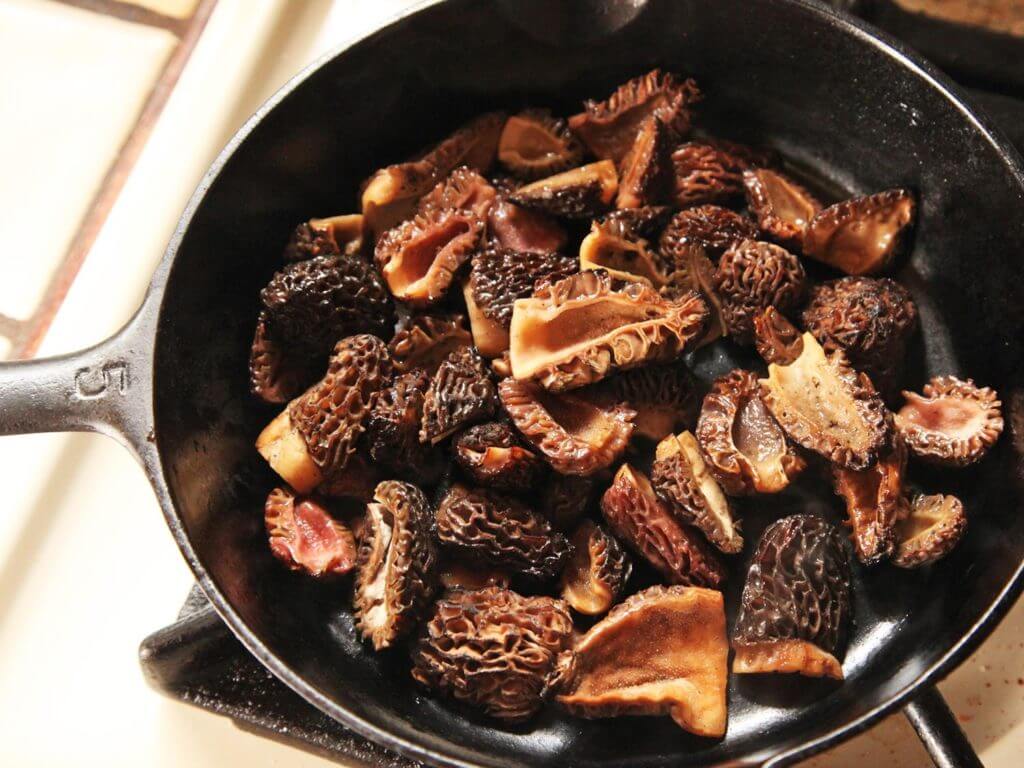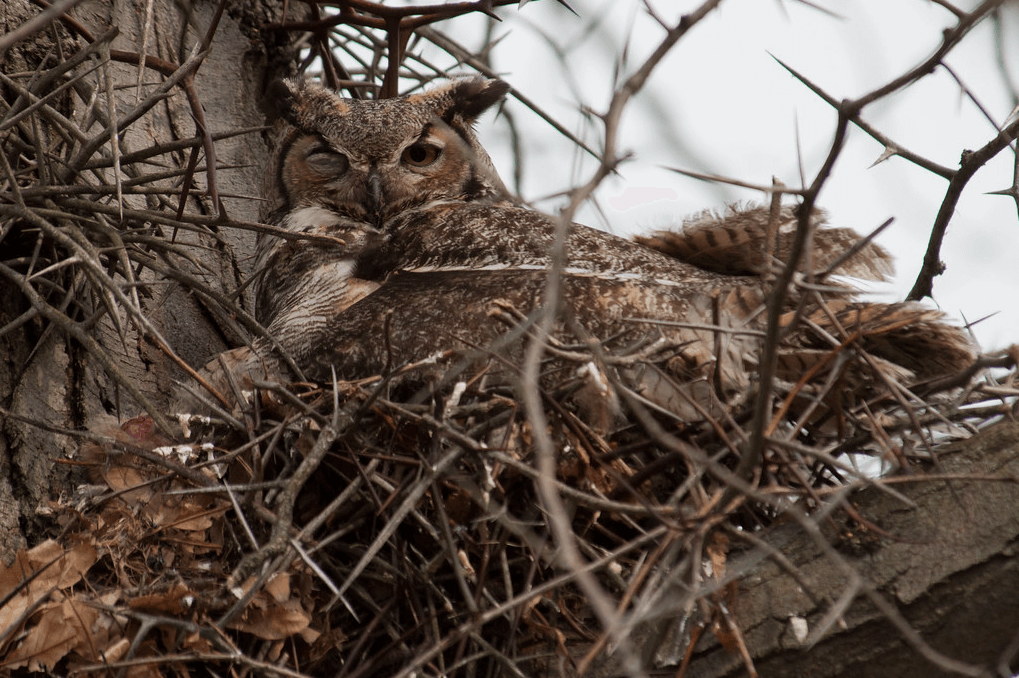By guest blogger & mycologist Tim Wheeler
The first thing to know about morels is they are a component of the spring mycota here in Montana. That is, if you’re out looking for morels in the fall, you will end up with an empty basket! The best time to start looking for morels is in mid-April with the peak fruiting in mid-May and into early June. Usually, by the time the long, hot, dry summers arrive, the morels have already completed their above-ground duties.

Morel Mushrooms, photo by Johannes Harnisch
The second thing to understand about morels is that they are one of the easier-to-recognize edible mushrooms in our area. There are a handful of “false morels” but these all differ by having pithy or tissue-filled stems as compared to the hollow stems of true morels. Additionally, the false morels lack the classic pitted honeycomb structure of the cap seen in the true morels.

A few examples of false morels (note filled stem in right photo). Photos by Jason Hollinger.
While it may be easy to recognize a mushroom as a morel, it can often be quite a challenge to identify the species. Currently, there are 21 species of morels known from North America, with upwards of 60 species globally. Evolutionarily, there are three groups of morels: the white morels, the yellow morels, and the black morels, corresponding to the rufobrunnea clade, the esculenta clade and the elata clade, respectively (for all those Morchella afficionados).

True morels (note hollow stem in middle photo).
There are three common species groups of morels that you will likely come across in Montana, depending on the season and habitat you are in. The earliest group is locally known as “naturals,” fruiting after the first warm nights post snowmelt. It can be found scattered in mixed mossy forests and is often a very dense, robust, pale-gray to black morel. The second group of morels to fruit are commonly known as the fire morels. There are 3-4 common fire morel species fruiting in our area, almost exclusively appearing in the spring and early summer the year following a forest fire. The last morel group to appear is locally known as the yellow morel or river morel. It tends to be our tallest morel, often best suited for all those”stuffed” morel recipes, and is associated with cottonwoods.

photo by Flickr user Larry and Teddy Page
Finally, it really doesn’t matter what species of morel you may find, because they are all edible and all taste like morels! But remember, cut your morels off just above ground level. This will not only keep your basket of morels clean, but also helps to protect the below-ground organism by minimizing disturbance. Furthermore, it is always wise to leave overripe individuals in the woods and to cook your morels on high heat. Good luck out there!

From all of us at MNHC: a big THANK YOU to Tim Wheeler for speaking at our Summer Camp Scholarship Luncheon this year!
Click here to see more posts from our Naturalist Blog.
Want to learn more about our programs as well as fun natural history facts and seasonal phenology? Sign up for our e-newsletter! You can also become a member and get discounts on our programs as well as free reciprocal admission to 300+ science centers in North America!












